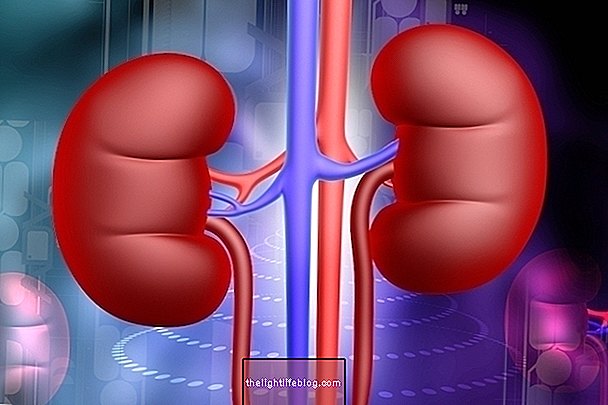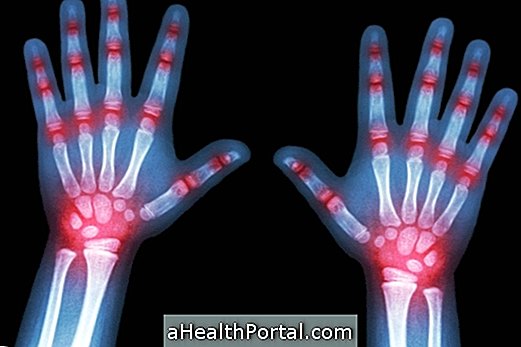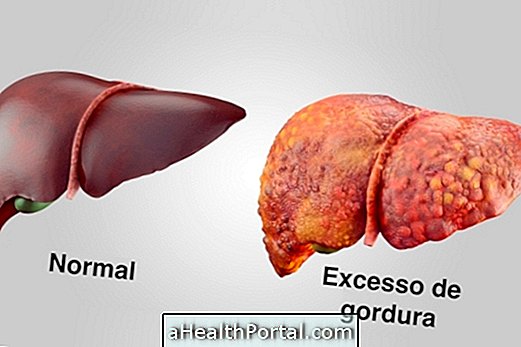Sarcoma is a rare type of tumor that can involve the skin, bones, internal organs and soft tissues, such as muscles, tendons and fat, for example. There are several types of sarcoma, which can be classified according to where they originate, such as liposarcoma, which originates in adipose tissue, and osteosarcoma, which originates in bone tissue.
Sarcomas can easily invade other places around their place of origin, which makes treatment more difficult and compromises the person's quality of life. For this reason, it is important that the diagnosis is made early and, thus, treatment can be established according to the type of sarcoma, with surgery to remove the sarcoma and, in some cases, chemo sessions or radiotherapy.

Main types of sarcoma
There are several types of sarcomas that are classified according to their place of origin. The main types are:
- Ewing's sarcoma, which can appear in the bones or soft tissues and is more frequent in children and young adults, up to the age of 20. Understand what Ewing's sarcoma is;
- Kaposi's sarcoma, which affects blood vessels, leads to the appearance of red lesions on the skin and is associated with infection by human Herpesvirus type 8, HHV8. Learn to recognize the symptoms of Kaposi's Sarcoma;
- Rhabdomyosarcoma, which develops in muscles, tendons and connective tissue, being more frequent in young people up to 18 years old;
- Osteosarcoma, in which there is involvement of the bones;
- Leiomyosarcoma, which develops in places where there is smooth muscle, which may be in the abdomen, arms, legs or uterus, for example;
- Liposarcoma, whose development begins in places where there is adipose tissue. Learn more about liposarcoma.
In the early stages of sarcoma there are usually no signs or symptoms, however as the sarcoma grows and infiltrates other tissues and organs, symptoms that vary with the type of sarcoma may appear. Thus, it may be noted the growth of a nodule in a certain region of the body that may or may not have pain, abdominal pain that worsens over time, presence of blood in the stool or vomiting, for example.
Possible causes
The causes of the development of sarcoma vary according to the type of sarcoma, however, in general, the development of sarcoma happens more easily in people who have genetic diseases, such as Li-Fraumeni Syndrome and Neurofibromatosis type I, have undergone treatment with chemotherapy or radiation therapy or have infection with the HIV virus or human Herpesvirus type 8.
In addition, some types of sarcoma, such as rhabdomyosarcoma, for example, can still be formed during pregnancy, in which the child is already born with malignant cells, and treatment should begin treatment soon after birth. Learn more about rhabdomyosarcoma.
How the diagnosis is made
The diagnosis of sarcoma is made by the general practitioner or oncologist based on the evaluation of the signs and symptoms presented by the person, as well as the results of imaging tests, such as ultrasound and tomography.
If any signs of alteration are found, the doctor may recommend performing a biopsy, in which a sample of the possible sarcoma is removed and sent to the laboratory for analysis. Microscopic observation of the collected material allows us to say whether it corresponds to a sarcoma, its type and the degree of malignancy. That way, the doctor can indicate the best treatment.
Treatment for sarcoma
The treatment for sarcoma varies with the type and, therefore, it is important to identify the type of sarcoma so that the most suitable treatment is initiated, avoiding complications.
The treatment usually indicated is surgical removal of the sarcoma, followed by chemo and radiotherapy sessions according to the type of sarcoma identified. It is important that the diagnosis and treatment be made as soon as possible, because if the sarcoma infiltrates the organs and tissues that are around it, the surgery becomes more complicated.
In some cases, when the extent of sarcoma is large, prior to surgery, chemo and radiotherapy sessions may be indicated to decrease the size of the sarcoma and, thus, surgery may be more effective.
Was this information helpful?
Yes No
Your opinion is important! Write here how we can improve our text:
Any questions? Click here to be answered.
Email in which you want to receive a reply:
Check the confirmation email we sent you.
Your name:
Reason for visit:
--- Choose your reason --- DiseaseLive betterHelp another personGain knowledge
Are you a health professional?
NoMedicalPharmaceuticalsNurseNutritionistBiomedicalPhysiotherapistBeauticianOther
Bibliography
- INSTITUTE TO BEAT CANCER. Sarcomas - What is it?. Available in: . Accessed on 10 Jul 2019
- INSTITUTE TO BEAT CANCER. Types of Cancer - Sarcomas. Available in: . Accessed on 10 Jul 2019
- ONCOGUIA. About Soft Part Sarcoma. Available in: . Accessed on 10 Jul 2019
- AMERICAN CANCER SOCIETY. What is a Soft Tissue Sarcoma?. Available in: . Accessed on 10 Jul 2019
- BP - THE PORTUGUESE BENEFICENCE OF SÃO PAULO. Sarcoma. Available in: . Accessed on 10 Jul 2019
- INCA. Ewing's sarcoma. Available in: . Accessed on 10 Jul 2019




-o-que--e-como--feito-o-tratamento.jpg)




















